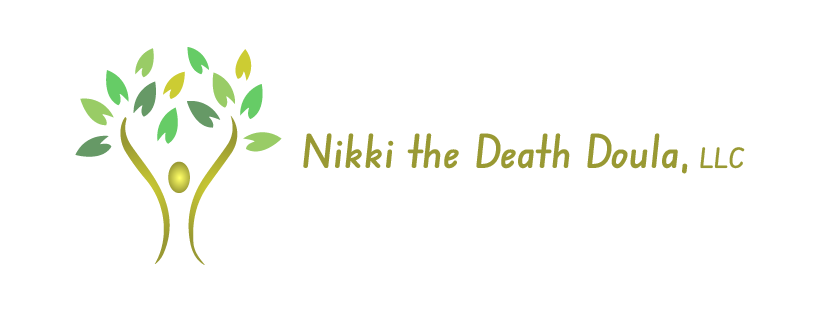The Myth of the Perfect Death: What Hollywood Gets All Wrong
Movies have taught me a lot about death growing up. At least, they’ve tried to. The camera pans in, soft music swells, and our dying hero whispers something poetic before peacefully closing their eyes. Everyone looks impossibly clean. The lighting is beautiful. Their loved ones are perfectly positioned around the bed, hands clasped, tears glistening at just the right angle.(I’m looking at you Beaches)
It’s moving. It’s cinematic. And it’s almost always B.S.
Because here’s the thing: there is no such thing as a “perfect death.” *steps down off soapbox * (Actually, lemme hop back up there for this)
Hollywood’s Favorite Lie
We’ve been sold a script about how death is supposed to look. The gentle goodbye. The tidy last words. The deep exhale that signals closure. But in real life, death is rarely that neat and tidy. It’s wildly unpredictable, often messy, sometimes awkward, but always deeply human. (And if humans are nothing else, we are unpredictable beasts, are we not?)
People don’t usually get to choose the soundtrack or the lighting. They might not say profound final words. Sometimes, they’re confused, or silent, or cracking jokes about hospital food. Bodies change in ways that aren’t camera-ready. Breathing becomes irregular. Emotions swing wildly between tenderness and frustration. And sometimes…..icky things occur.
And yet, because of what we’ve been shown on screen, so many people end up feeling like they’ve failed when reality doesn’t match the movie version.
“She didn’t get her moment.”
I’ve heard this from families before. Someone will say, “I thought she’d say something beautiful,” or “I wish it had been more peaceful.” It’s so hard to hear. And I try to warn folks ahead of time, but they don’t always want to hear me. But there’s a disappointment that the ending wasn’t what they expected.
Death isn’t a performance. There’s no director calling “Cut!” and asking for another take. It’s raw, unfiltered life happening in its most honest form. Sometimes it’s gentle. Sometimes it’s chaotic. Sometimes it’s both in the same ten minutes. (I mean is birth as pretty as hollywood makes it out to be?)
When we strip away the Hollywood myth, we make room for something far more real: authenticity.
What a “Real” Death Looks Like
A real death might look like a family crowded around a hospice bed, exhausted but still holding hands. It might sound like laughter mixed with tears. It might mean someone slips away in the middle of the night, when no one’s watching. (Honestly, this is usually the case)
Real death isn’t always graceful. There may be moments of fear or agitation. There are last-minute reconciliations and words left unsaid. There are nurses and caregivers doing sacred, unglamorous work with cleaning, comforting, sitting in the silence. (And yes I’ve heard utterances of “why aren’t they gone yet?!” or “why are they hanging on?”)
And yet, within all that imperfection, there’s profound beauty. Because it’s real.
There is love in showing up even when it’s uncomfortable, and family choosing presence over perfection. It takes courage to witness the end without needing it to look “right.”
Why This Myth Hurts Us
When people expect a cinematic death, they can feel guilt or shame when things don’t go “as planned.”
They might think:
I should have been there when they took their last breath. (OMG I hear this ALL. THE. TIME)
We didn’t get to say goodbye properly.
They seemed restless, does that mean they were suffering? (Likely, no)
Those thoughts come from love but also from cultural conditioning. Hollywood rarely shows what death actually looks like. It romanticizes it and wraps it up in a neat emotional bow. Usually in under 2 hours.
The truth is, death is a transition, a labor. It’s not a scene.
Rewriting the Script
So how do we unlearn the myth of the perfect death?
We start by talking about it. And no, talking about death does not make it happen!!! We normalize the messiness, the unpredictability, the humanness of dying. We remind people that gasping or fidgeting near the end isn’t a sign of suffering, it’s biology. That silence doesn’t mean fear. That peace can exist even in imperfection.
As a death doula, I see the sacredness in all of it. The awkward moments, the laughter, the unexpected timing, the…erm…. Gaseous emissions. It’s all part of the story. Sometimes the most beautiful deaths are the ones that look nothing like a movie, but everything like real life.
And maybe that’s the better ending after all. Not one written by a screenwriter, or god forbid AI, but by the people who loved and lived it.
The Takeaway
Hollywood may give us the myth of the perfect death, but real life gives us something deeper: connection. When we stop chasing the movie version, we can start being fully present for the human version.
Because the truth is death doesn’t have to be pretty to be meaningful. It just has to be real.
